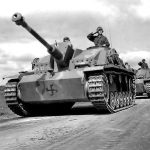The Winter War, fought between Finland and the Soviet Union from November 30, 1939, to March 13, 1940, was a defining moment in Finnish history. Despite being vastly outnumbered and under-equipped, Finnish forces displayed remarkable resilience and tactical skill, earning international admiration. While Finland ultimately signed a peace treaty that ceded territory to the Soviet Union, the country’s spirited defense demonstrated its commitment to sovereignty and strengthened national unity. For those studying for the Finnish citizenship test, understanding the Winter War highlights Finland’s values of resilience, determination, and the importance of international solidarity.
Background to the Winter War
The Winter War erupted against the backdrop of rising tensions in Europe, just months after the outbreak of World War II. In August 1939, Nazi Germany and the Soviet Union signed the Molotov-Ribbentrop Pact, a non-aggression agreement that included secret protocols dividing Eastern Europe into spheres of influence. Finland fell within the Soviet sphere, and Soviet leaders saw the country as strategically significant due to its proximity to Leningrad (present-day St. Petersburg).
In October 1939, the Soviet Union demanded that Finland cede border territory, establish Soviet military bases on Finnish soil, and effectively surrender a portion of its sovereignty. Finnish leaders refused, viewing the Soviet demands as a threat to their independence. When negotiations failed, the Soviet Union launched a full-scale invasion on November 30, 1939, beginning the Winter War.
Key Aspects of Finnish Resistance
Finland’s military strategy, harsh winter conditions, and high morale played crucial roles in enabling Finnish forces to resist the Soviet invasion despite overwhelming odds.
- Effective Use of Terrain and Winter Conditions:
- Finnish forces made skillful use of their country’s rugged terrain and freezing winter conditions to offset Soviet numerical superiority. Soldiers utilized guerrilla tactics, launching hit-and-run attacks and ambushing Soviet forces along forested roads.
- Known as the “Motti” tactics, Finnish soldiers isolated smaller groups of Soviet troops and destroyed them one by one, preventing Soviet forces from fully utilizing their strength. These tactics were especially effective in Finland’s dense forests and snow-covered landscapes.
- Superior Mobility and Use of Skis:
- Finnish troops, accustomed to the winter climate, were equipped with white camouflage and used skis for greater mobility in deep snow. This gave them a significant advantage over Soviet soldiers, who were less prepared for the extreme cold and struggled with mobility.
- Finnish ski troops moved quickly across snowy terrain, launching surprise attacks and evading larger Soviet units. The agility of the Finnish forces allowed them to counter Soviet advances and disrupt supply lines.
- High Morale and National Unity:
- The defense of Finland against the Soviet invasion united the Finnish people, creating a strong sense of national pride and determination. Finnish soldiers and civilians alike showed remarkable resilience, motivated by a fierce commitment to defending their homeland.
- The Finnish spirit of sisu, a term describing perseverance and determination in the face of adversity, became emblematic of the nation’s resolve during the Winter War. This collective spirit sustained Finnish morale, even as losses mounted and supplies dwindled.
- Key Figures in Finnish Leadership:
- General Carl Gustaf Emil Mannerheim, who commanded the Finnish armed forces, was a critical figure in organizing the country’s defense. Mannerheim’s leadership, strategic insight, and ability to inspire confidence played an essential role in Finland’s resistance efforts.
- President Kyösti Kallio and Prime Minister Risto Ryti also provided strong leadership, mobilizing resources and rallying the public. Their dedication to maintaining Finland’s sovereignty kept the population united in their determination to resist Soviet aggression.
International Support and Sympathy for Finland
Finland’s courageous resistance drew widespread admiration and sympathy from around the world. While Finland received some material assistance, most countries were unable to provide substantial support due to their own commitments in World War II.
- Material and Financial Aid from Sweden and Other Nations:
- Sweden, while officially neutral, provided significant support to Finland, including financial aid, weapons, and volunteers. Swedish organizations raised funds for Finnish relief efforts, and over 8,000 Swedish volunteers joined the Finnish forces on the front lines.
- Other countries, including the United States, the United Kingdom, and France, sent medical supplies, ammunition, and other resources to support Finland’s defense. However, the aid was limited by logistical challenges and the demands of World War II.
- Volunteer Forces and Foreign Fighters:
- Thousands of volunteers from countries such as Sweden, Norway, and Denmark traveled to Finland to join the fight against Soviet forces. The Swedish Volunteer Corps, a unit of Swedish soldiers, played a notable role in supporting Finnish troops along the front.
- International volunteers were motivated by a sense of solidarity with Finland’s struggle for independence and by opposition to Soviet expansion. Although the volunteer forces were not large enough to change the outcome of the war, their presence boosted Finnish morale.
- Diplomatic Support and Global Sympathy:
- Finland’s resistance gained widespread attention in the international press, with newspapers and radio broadcasts describing the country’s defiant stand against the Soviet Union. Public opinion in many countries was strongly sympathetic to Finland’s cause, viewing it as a heroic defense of freedom and sovereignty.
- Despite this sympathy, international powers were largely preoccupied with their own wartime concerns, limiting their ability to intervene directly in support of Finland.
Outcome of the Winter War and the Moscow Peace Treaty
After over three months of intense fighting, both Finland and the Soviet Union recognized the need for peace. Finland had managed to inflict significant losses on Soviet forces, but it was running low on supplies and faced the prospect of a prolonged conflict.
- The Moscow Peace Treaty (March 13, 1940):
- On March 12, 1940, Finland and the Soviet Union signed the Moscow Peace Treaty, bringing the Winter War to an end. The treaty came into effect on March 13, 1940, with Finland agreeing to cede approximately 11% of its territory, including the city of Viipuri and parts of Karelia.
- While Finland retained its sovereignty and independence, the territorial concessions were painful, as many Finns were forced to leave their homes in the ceded regions. Approximately 400,000 Finnish citizens, or about 12% of the population, were displaced by the border changes.
- Impact on Soviet and Finnish Forces:
- Despite Soviet victory, the Winter War exposed weaknesses in the Soviet military, which had suffered heavy casualties and logistical failures. The Soviet Union’s initial failures in Finland led to reforms in the Red Army and influenced Soviet military strategy during World War II.
- For Finland, the war demonstrated the strength of its national spirit and military resilience. Although Finland had lost territory, its sovereignty remained intact, and the country emerged with a sense of unity and pride in its defense.
Long-term Consequences and Legacy of the Winter War
The Winter War left a lasting impact on Finnish society and influenced Finland’s foreign policy for years to come.
- Strengthening of National Identity: The Winter War became a defining moment in Finland’s national identity, reinforcing the values of resilience, independence, and the spirit of sisu. The war is remembered as a testament to Finland’s ability to defend its sovereignty against overwhelming odds.
- Finland’s Policy of Neutrality: The experience of the Winter War reinforced Finland’s commitment to maintaining neutrality in future conflicts. Finland pursued a policy of non-alignment during the Cold War, balancing its relationships with both Western and Soviet powers to preserve its independence.
- International Recognition and Respect: Finland’s determined resistance in the Winter War earned it international respect and admiration, strengthening its diplomatic standing in the postwar years. Finland’s successful defense became an example of courage and unity, inspiring other small nations facing external threats.
- Legacy of Defense and Preparedness: The Winter War underscored the importance of national defense and preparedness. Finland has since maintained strong defense capabilities, ensuring that it remains ready to defend its borders and sovereignty. The legacy of the Winter War continues to shape Finland’s approach to security and national defense.
Conclusion: The Significance of the Winter War in Finnish History
The Winter War of 1939-1940 was a remarkable chapter in Finnish history, showcasing Finland’s resilience, strategic skill, and commitment to independence. While Finland ultimately ceded territory in the Moscow Peace Treaty, its resistance demonstrated the strength of national unity and the value of defending sovereignty. The Winter War remains an enduring source of pride for the Finnish people, symbolizing the nation’s enduring spirit of sisu and dedication to freedom.
For those studying for the Finnish citizenship test, understanding the Winter War highlights the values of resilience, independence, and international solidarity that continue to shape Finnish society. The legacy of the Winter War serves as a reminder of Finland’s determination to defend its way of life, even in the face of adversity.



The Winter War is a testament to Finland’s incredible resilience and determination in the face of overwhelming odds. It’s inspiring how such a small nation could stand up to a superpower and earn global respect. The harsh winter conditions and Finnish tactics were key, but it’s also fascinating how national unity played such a crucial role. I wonder, though, how much of this resilience was rooted in Finland’s cultural identity or if it was purely a survival instinct. The Molotov-Ribbentrop Pact’s role in escalating tensions is also a reminder of how global politics can shape smaller nations’ destinies. Do you think Finland’s resistance during the Winter War had a lasting impact on its national identity? And how do you think the world’s response, or lack thereof, influenced Finland’s post-war policies?